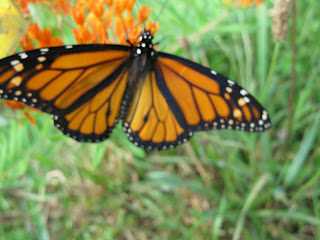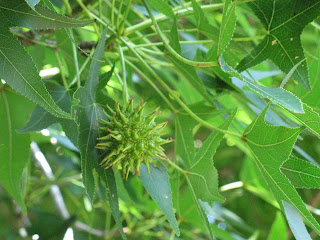Several years ago in Wyoming after a concert by local musicians, The Prickly Pair, we talked for a few moments with fiddler, Les Hamilton.
I mentioned how many of the cowboy/campfire tunes have such similarity to old Scottish ballads.
Les told us how his family is descended from Scots who homesteaded in South Dakota and Wyoming, bringing with them their old tunes and their fiddles.
Laughingly he reminded me that Celtic music was not the only thing the Scots brought with them to the New World.
"Cattle rustling," he commented, "was well known and practiced in the Highlands, and there were those settlers who took it up in the American West."
We've all seen the B Westerns where the "bad guys" are rounding up and "rustling" the cattle of the honest struggling ranchers and must be brought to justice by the "good guy" in the white hat.
Cattle round-ups are still part of the western scene--spring and fall we watched herds on the move, controled by experienced horsemen and women, aided by a few savvy cow-dogs.
Rustling, I supposed, was a thing of the past and not a practive we would encounter in Kentucky.
Since moving here our only "neighbors" visible to the south have been a herd of cattle. Sometimes they are just beyond the boundary fence, calves skipping, bucking and bawling behind their mothers, the bulls pacing ponderously, keeping a bullish eye on their domain.
The pasture, rented to the owner of the cattle, runs along the curving road, takes in the derelict yard of an abandoned farmhouse, with its southern-most boundary at a creeper-covered empty house and barn surrounded by overgrown weeds and uncut hay.
When the cattle have been grazing on this end of their territory they have sometimes raised bovine heads to stare at our activities in the lower garden. They watched on Tuesday evening as I yanked out unworthy tomato plants and uprooted raddled bean bushes.
Last evening, after a short but vehement burst of rain, J. resumed bush-hogging the pasture, mowing the stretch across the road from our good neighbor, D.H.
D.H. was working in his yard and true to the code of southern manners, J. stopped the tractor and crossed the road to "be neighborly."
J. came home with the astounding news that 22 of the resident cattle had been stolen, rustled, driven away a week or so ago, and the thieves have not been apprehended!
It has been rumored that the remaining cattle from that group have been sold or moved;
tonight as we went about gathering some produce in the relative cool of the evening, we looked up to see some familiar forms moving slowly down the pasture.
Perhaps the thieves are "lying low" or perhaps someone is "riding night herd" in the traditional way.
This is the brief notice which I found in the on-line edition of the local paper:
Reward offered in case of cattle theft at Gradyville, KY
Offering a $5,000.00 cash reward for the Arrest and Conviction involving the theft of 22 Black Angus Beef Cattle in the Gradyville community. Also, along with the $5,000.00 cash reward a person(s) can pick the best cow out of the herd to keep for the Arrest and Conviction involving the theft. Any information please contact the KSP Post in Columbia, KY.
This notice was followed by the names and phone numbers of the cattle owners.
I was interested enough to Google "cattle rustling" and was amazed to find that the ancient practice has been revived in the past few years and is quite a flourishing crime, particularly in the south-western United States.
A cattle thief was nabbed recently in the nearby state of Tennessee when he attempted to sell 11 head of cattle out of his trailer in a large parking lot. The prospective buyer suspected something amiss and phoned the sheriff.
J. and D.H. speculate that the thieves here must have laid their plans well ahead. The territory of the old barns and buildings lie in an S-curve of the creek with no neighbors over-looking the farther pastures. A rough track leads from the road up behind a ramshackle barn.
Having had exasperating experiences with cattle who didn't wish to be rounded up, driven, penned or loaded, I can marvel at the enormity of the cunning and luck involved in moving 22 head without a chance passer-by taking note.
Perhaps they planned to do their dirty work by the light of the waxing moon.
We all hope the deed was done by outsiders, not a local group.
We hope that the "good guys" in the white hats bring justice to the hills and hollers of Kentucky.
[As a side note, if you would like to read more about Les Hamilton the fiddler and his wife, Locke,
here's the link to their website. ]





















































